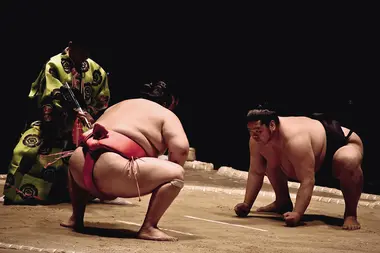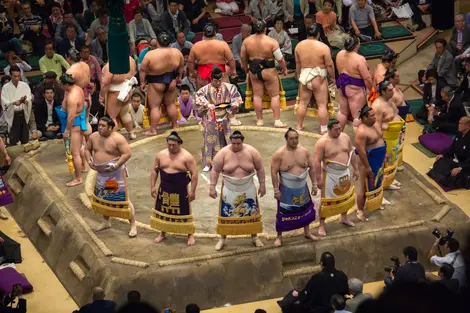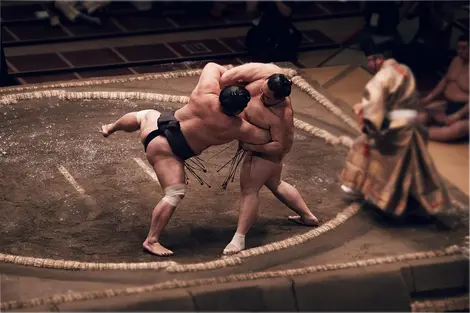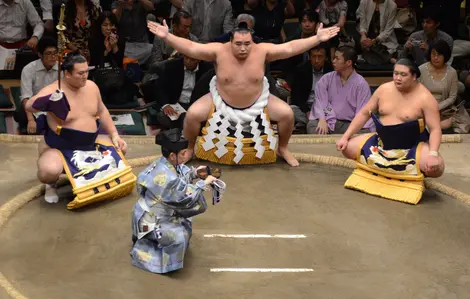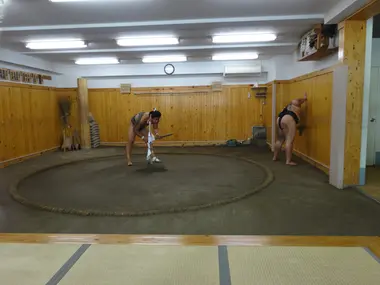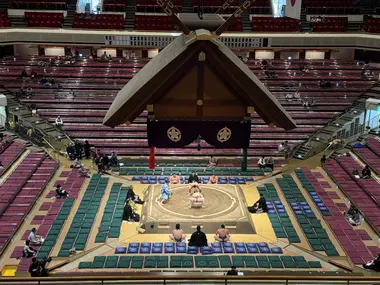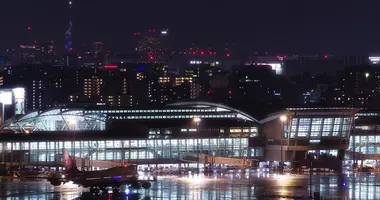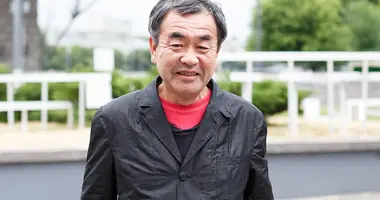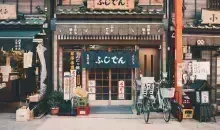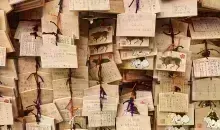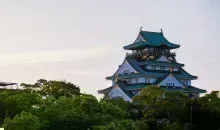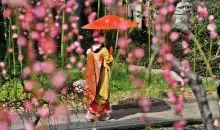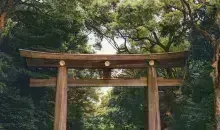What is it like to see a sumo tournament in Japan?
- Published on : 01/01/2025
- by : G.L.
- Youtube
The national sport of Japan, sumo, is one of the most iconic martial arts in the world. Instantly recognizable, it is synonymous with Japanese culture, and for many, seeing sumo in action firsthand is a dream. But what exactly can one expect when attending a sumo tournament? Read on for more information on this and the sport as a whole!
In the modern day, there are said to be around 180 different martial arts practiced throughout the world. While each of these martial arts has distinct histories connected to their cultures of origins, more-and-more, their practices take presence on the international stage, adopted by dynamic athletes and fighters throughout the world. This streamlining is an acknowledgement of these martial arts’ respective growths and development, but for sumo, the image of large-bodied fighters staring each other down within a rustic, dirt-floored ring is one that is Japanese through and through.
Such is also evident through the distinct details and iconography of historic Japan found throughout the sport, and without them, sumo can hardly be considered sumo. Revered as the national sport of Japan, the martial art has a centuries-long history and is firmly rooted in Shinto customs. From the ring's salt cleansing to the wrestlers' solemn stomping to fend off evil spirits, the ceremonial procedures capture the timeless spiritual value of this enthralling show. Sumo matches provide a unique chance to see Japan's cultural legacy and competitive spirit in an enduring environment.
The rich history of sumo (spelled as 相撲 in Japanese) is brought to life when one attends a sumo tournament in Japan and is an immersive experience that is sure to make a trip out to the island nation feel all the more authentic and unique.
But what does attending a tournament for one of Japan’s most treasured cultural activities entail? In this article, we’ll go over some of the key details of the sport of sumo and the process of attending a tournament, including:
- Basic rules of sumo
- The tournament process
- Ticket acquisition
- General things to know!
Read on for some great information to know before going out to see one of Japan’s most distinct cultural events, and enjoy the atmosphere fueled by tradition and competition!
Things to know about Sumo
Sumo is defined as a grappling sport, and its dyanimicism and appeal lie in its simplicity. Essentially, two wrestlers, called rikishi, compete to get the other into a disqualified state, utilizing different holding, sliding, and other techniques. To maintain their balance and stature, a greater weight and center of gravity is largely beneficial, which is why sumo wrestlers are built to have very large, heavy bodies. A clearer outline of the general rules and what disqualifies a fighter during a match is as follows:
The basic rules
1. Using permissible techniques, rikishi will look to get their competitor outside of the ring (known as the dohyo) or get them to touch the ground with anything but the soles of their feet.
2. Permissible techniques include things such as pushing, grappling, slapping, and tripping. Forbidden techniques are as follows:
- Punching
- Kicking
- Grabbing below the waist
- Hair-pulling
- Hari-te (wide movement slapping)
- Choking
- Sabaori (Striking from above while holding the belt)
- Locking fingers in a “prayer” hold when grappling
3. A sumo match is proctored by one figurehead known as the gyoji.
4. The ring is surrounded by five shinpan who serve as secondary judges and are all former rikishi fighters themselves.
Indeed, the rules are very simple, and that’s largely where much of the charm of the sport lies: an emphasis and appreciation of the “critical moment," in which a match is decided with one move at any given time. In official sumo, one match consists of three rounds.
The culture of sumo
As previously mentioned, sumo is a sport steeped in tradition, largely due to its long history of development on the island nation. This is evident in things such as the dohyo ring, reconstructed by hand before every tournament. The dohyo’s outer border is made of a woven rope, dubbed a shimenawa, which is a traditional ornament in Shinto! Going to many Shinto shrines in Japan, visitors will see shimenawa ropes hanging from the main structure and from other areas, and its presence in sumo is testament to the deep ties the sport has to Japan.
Like many other sports, training and honing of skills start at a relatively young age. Many rikishi begin their journey from middle school, working up the ranks as they grow older and garner experience. Throughout Japan, there are around 600 training and competing rikishi. A vast majority of these rikishi, throughout their training and careers, live in designated lodgings that are referred to as “sumo stables.” At these stables, rikishi are provided with shelter and food, and in the mornings they train and practice.
These stables are often located within areas of respective cities that are established centers for sumo wrestling. In Tokyo, this is Ryogoku, located in the Sumida District of the city. Ryogoku is home to the Kokugikan, the stadium that is home to Tokyo’s sumo tournaments, and a majority of the city’s sumo stables are located nearby.
In fact, sumo rikishi and trainees can be seen around the area often. The current Ryogku Kokugikan shares its name with a stadium that was opened in 1909. That building eventually closed, and the new one was opened in 1985. While the facility hosts a number of different events, including boxing matches and other sporting matches, it is most known for sumo.
Tournament season
Sumo competitions largely take place during tournament seasons, of which there are three per year in January, May, and September. The tournament spans for two weeks during these months, and around 70 established rishiki compete on a daily basis, with the remaining competitors having matches every other day.
Rikishi rankings are published well in advance of the tournament. There are six different divisions of competition throughout sumo, with the top 42 being in a division known as the Makuchi. These are the rikishi who garner the most attention and fanfare, but witnessing a series of matches is a serious event with much flare.
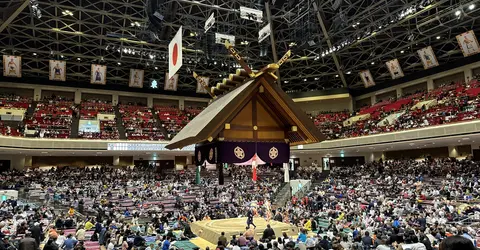
Inside the Kokugikan in Ryogoku
@Japan Experience
Experiencing sumo more in-depth
The excitement and dynamic environment of a sporting event combined with the history-driven culture of sumo makes attending a sumo tournament one of the most standout events any traveler can experience. Of course, with so much to learn, just watching isn’t the only option for taking in the culture of sumo! A visit to the sumo stables in the morning to see their morning practice allows for a peek behind the curtain of their training, with a more stripped-back and intimate atmosphere.
Learn about their exercise routine and bear witness to the unique environment of a morning training session, ominously quiet with the tension of concentration. Visiting the sumo hall in the morning paired with seeing the results of their training at the actual tournament is truly a whole-package experience!
Learn more about sumo by visiting the training stables in the morning!
Attending a tournament in Japan
Seeing a tournament firsthand in Japan is an activity many travelers dream of, as a sumo event of its scale is exclusive to those within and visiting the country. There are a few things to note and prepare for if you are able to participate in the sumo tournament festivities!
Firstly, it should be noted that the tournament is actually an all-day endeavor. This doesn’t mean that you are obligated to enter from the beginning and stay until the very end, but matches take place throughout the entire day. If you do stay for the whole day, you’ll notice that the venue will gradually fill up as the more popular and established fighters have their matches later on in the day. Staying the whole day allows attendees to take in the unique environment, and as things progress and the higher-level fighters take the stage, the ceremonies and ornamentation of their dress and rituals become more prestigious and extravagent.
Within the stadium, bento boxes can be purchased for lunch, many of which have specialized motifs of popular rikishi. Around 12PM, many attendees will eat, providing a communal, picnic-like environment to the venue! These bentos are designed to be eaten at your seats.
Within most sumo venues, there is standard stadium seating as well as more traditional box seating with cushions for spectators to sit on. It is typically four people per box, and they are often booked by parties of that number.
The seats encircle the central dohyo, and one will notice a concentrated yet ominous silence in the arena before and during matches, but once a match commences, the vigorous grunts of the two facing wrestlers echoes throughout the stadium. Above the dohyo and the seats, pictures of the previous tournament champions are on display, as well as the venerable Yokozuna, the most revered rikishi in history who have earned said title only after winning at least two consecutive tournaments.
Of course, like any sporting event, merchandise is in no shortage at a sumo tournament, ripe for curating by dedicated fans. General goods are available, but rikishi-specific merchandise is also up for sale!
Getting tickets to a sumo tournament
Of course, in order to attend a sumo tournament, you’ll need to acquire tickets for the event! Sumo in Japan, as the country’s national sport, is very popular, so tickets are in high demand, especially since tournaments are only held three times a year!
Largely, getting tickets comes down to largely two different ways: in person at a “Ticket Pia” office in Japan or through the “Ticket Oosumo” website (also operated by Ticket Pia). The Japan Sumo Association announces the purchasing period for tickets fairly far in advance, and the night before sales go up, many dedicated followers of the sport will line up at Ticket Pia shops for their best chances at quality seats. For those going this route, be prepared to line up, and for sumo specifically, Ticket Pia shop staff will hand out cards to fill out with purchasing information and desired seating arrangements.
Ticket Oosumo is said to be a more reliable, hands-off way of purchasing tickets, but be aware that even through this website, tickets will be in-demand. Tickets from this website can be purchased in English and are picked up at the venue on the day of attendance.
Essentially, tickets are distributed based on seating arrangements, categorized as follows:
- Ringside seats: These are the seats closest to the dohyo and go for 20,000 yen a seat. These are exclusive to the Ticket Oosumo website.
- Box seats: These are closed-off boxes typically that seat parties of four and are rentable at a general rate that can be split between each attendee. They are ranked S to C, with S being the most luxurious and nearby boxes.
- Chair seats: These are akin to typical stadium seating and are the farthest from the dohyo, but are most affordable and still provide a good view of the action!
Seating prices are different depending on if it is a weekday or weekend tournament and are subject to change depending on the year. As of 2025, the prices for box seating and stadium seating are as follows:
| Seat Rank | Box Seats (Weekend/Weekday) | Chair Seats (Weekend/Weekday) |
|---|---|---|
| S | 60,000 yen/50,000 yen | 9,500 yen/9,000 yen |
| A | 52,000 yen/48,000 yen | 8,500 yen/8,000 yen |
| B | 42,000 yen/40,000 yen | 5,500 yen/5,000 yen |
| C | 38,000 yen/34,000 yen | 4,000 yen/3,500 yen |

